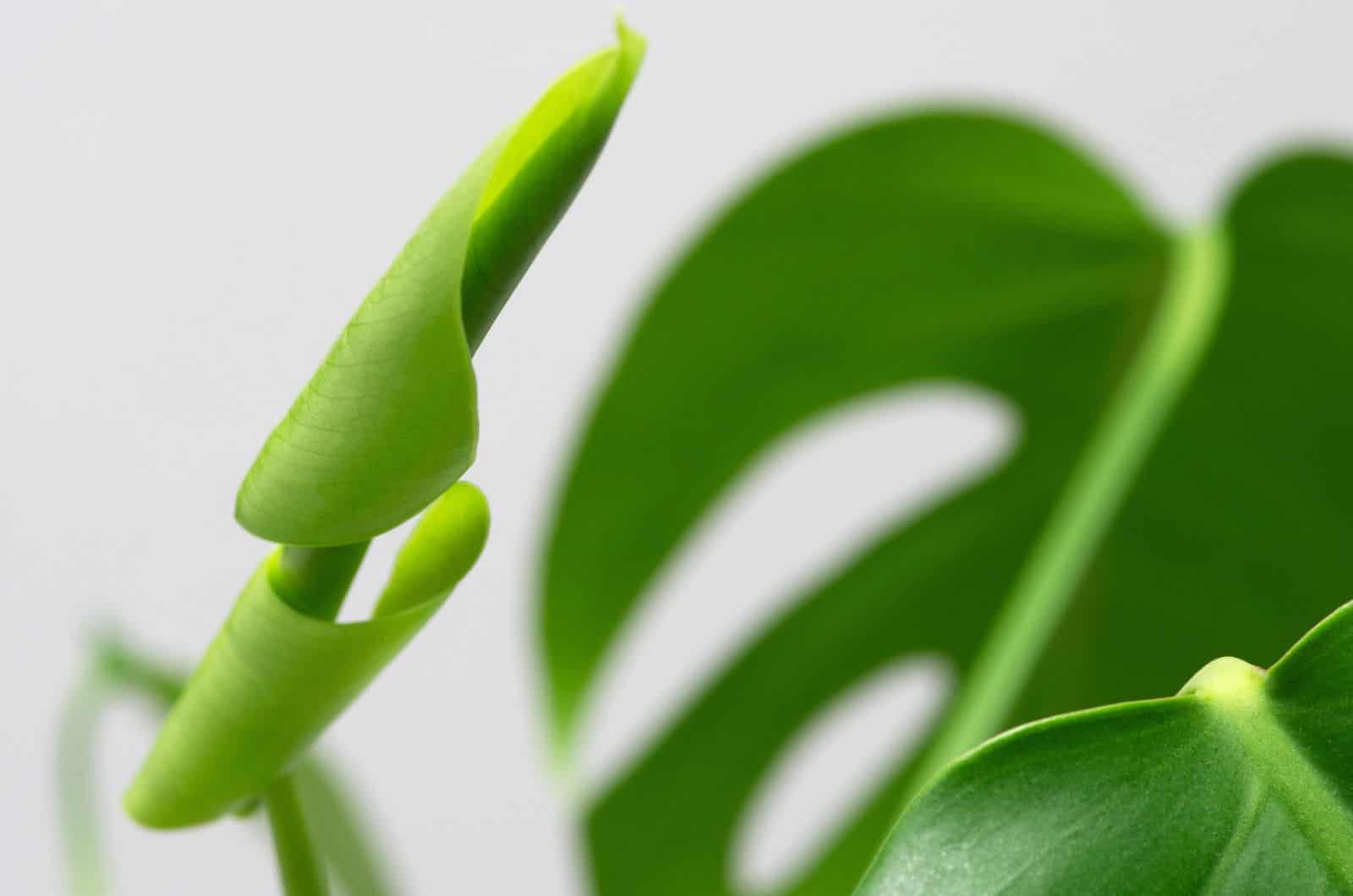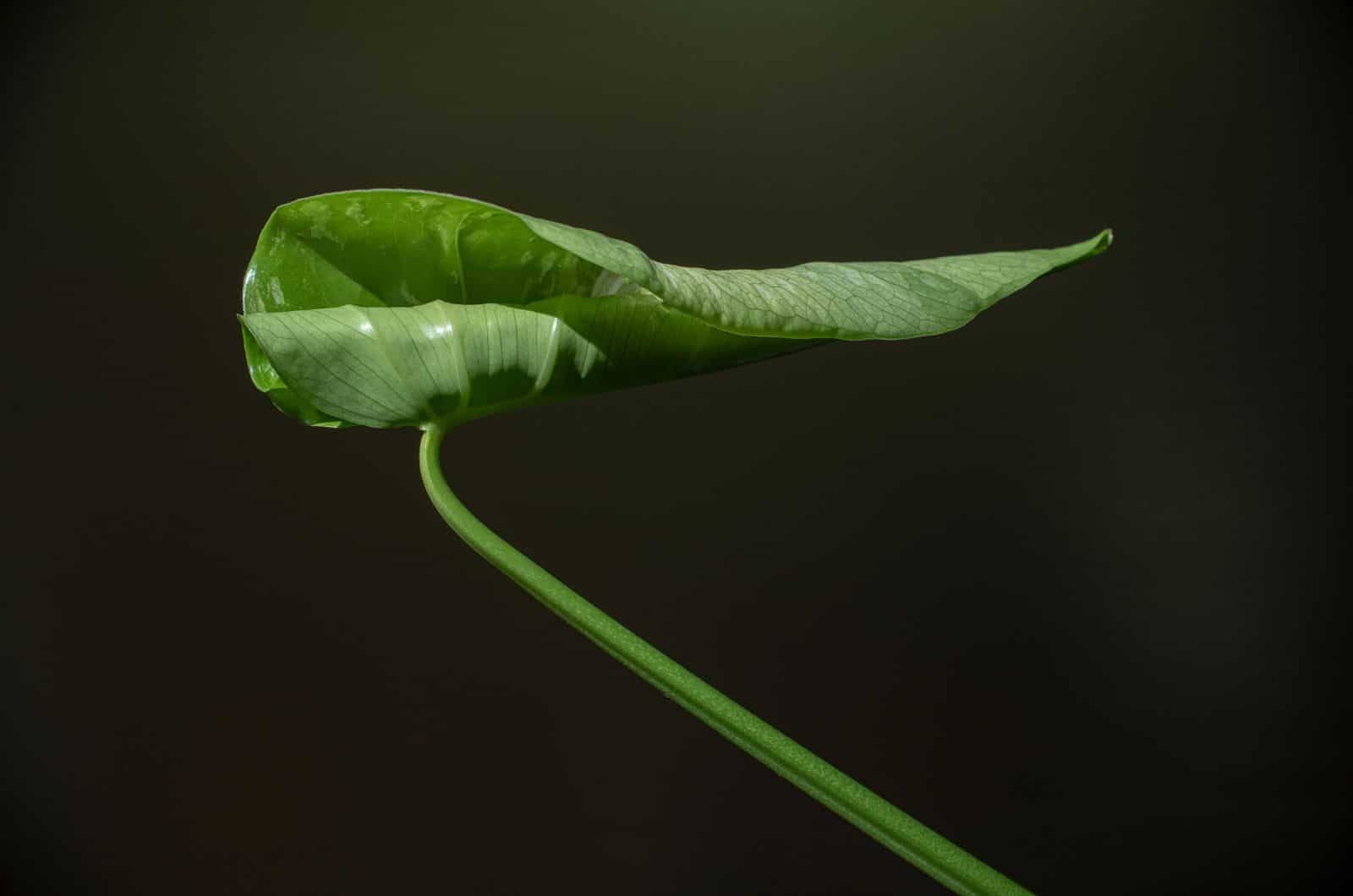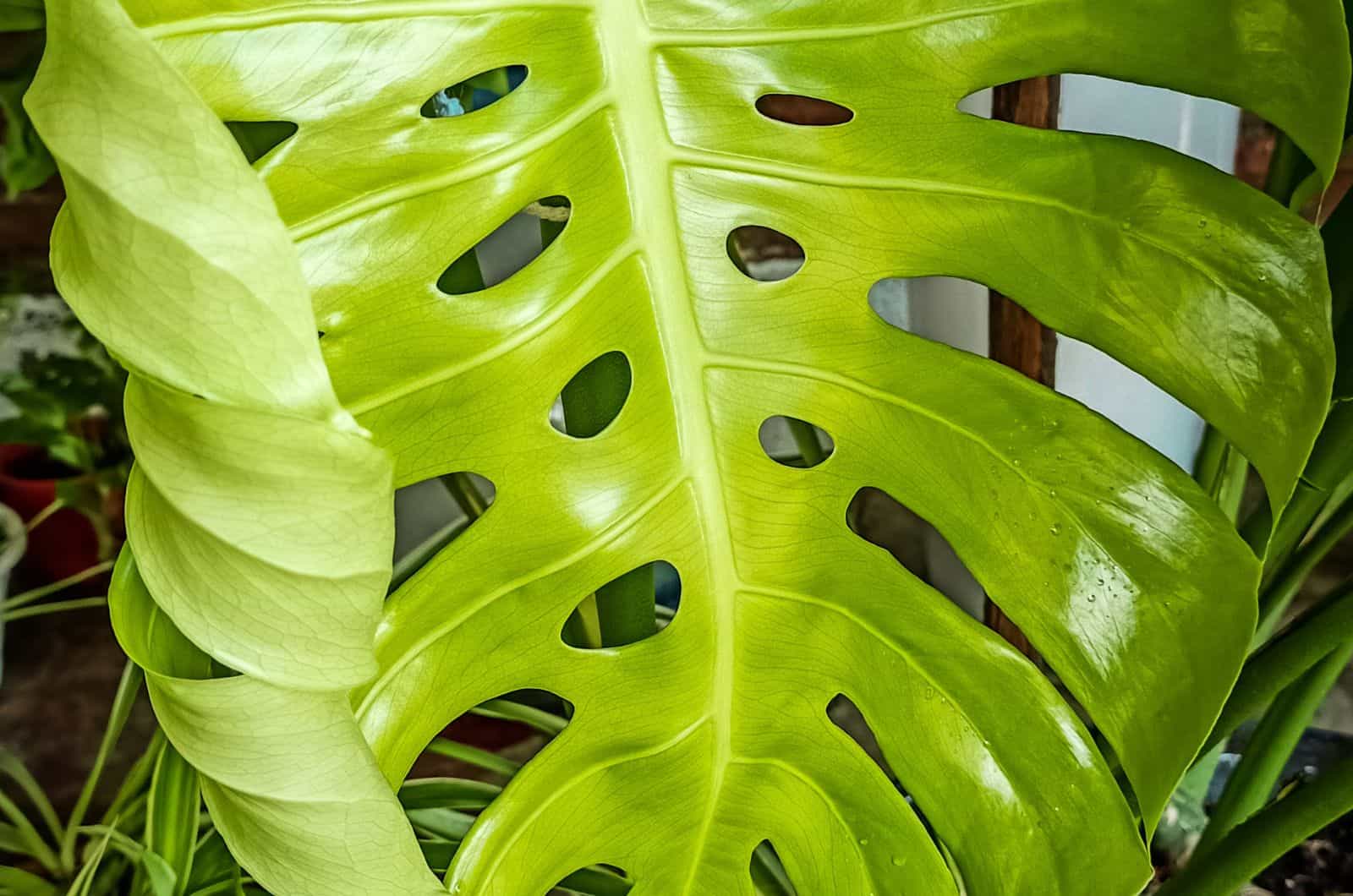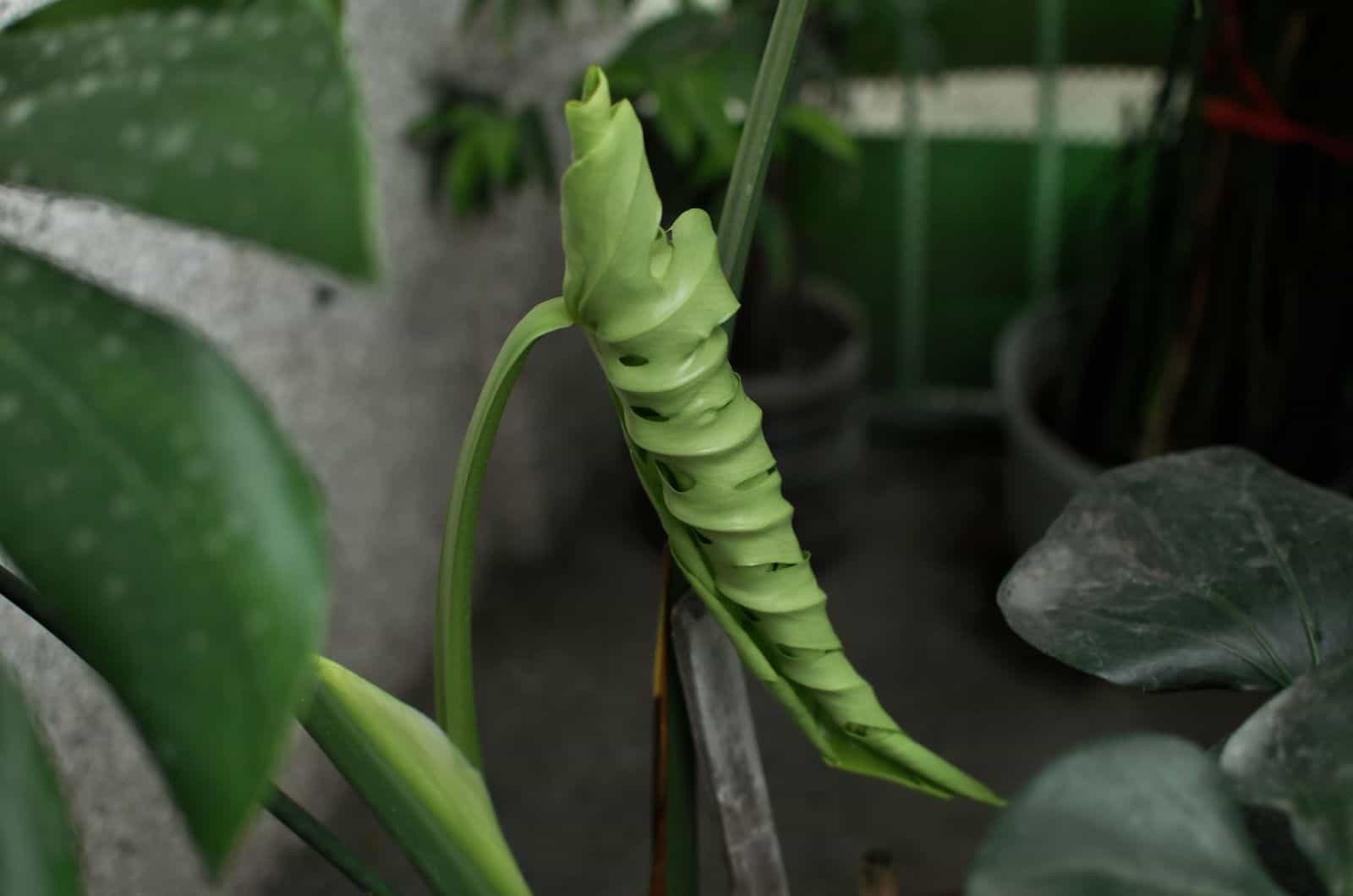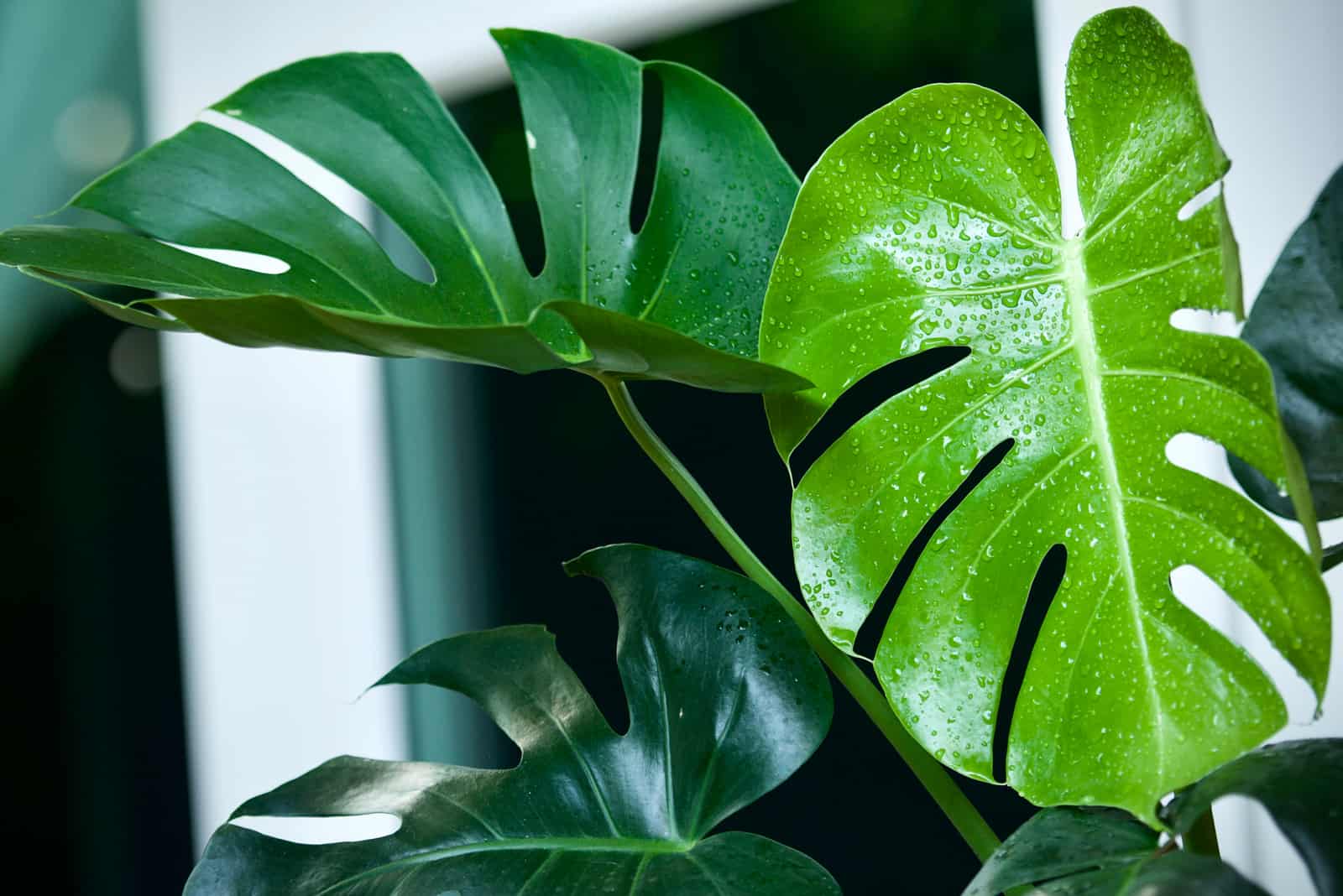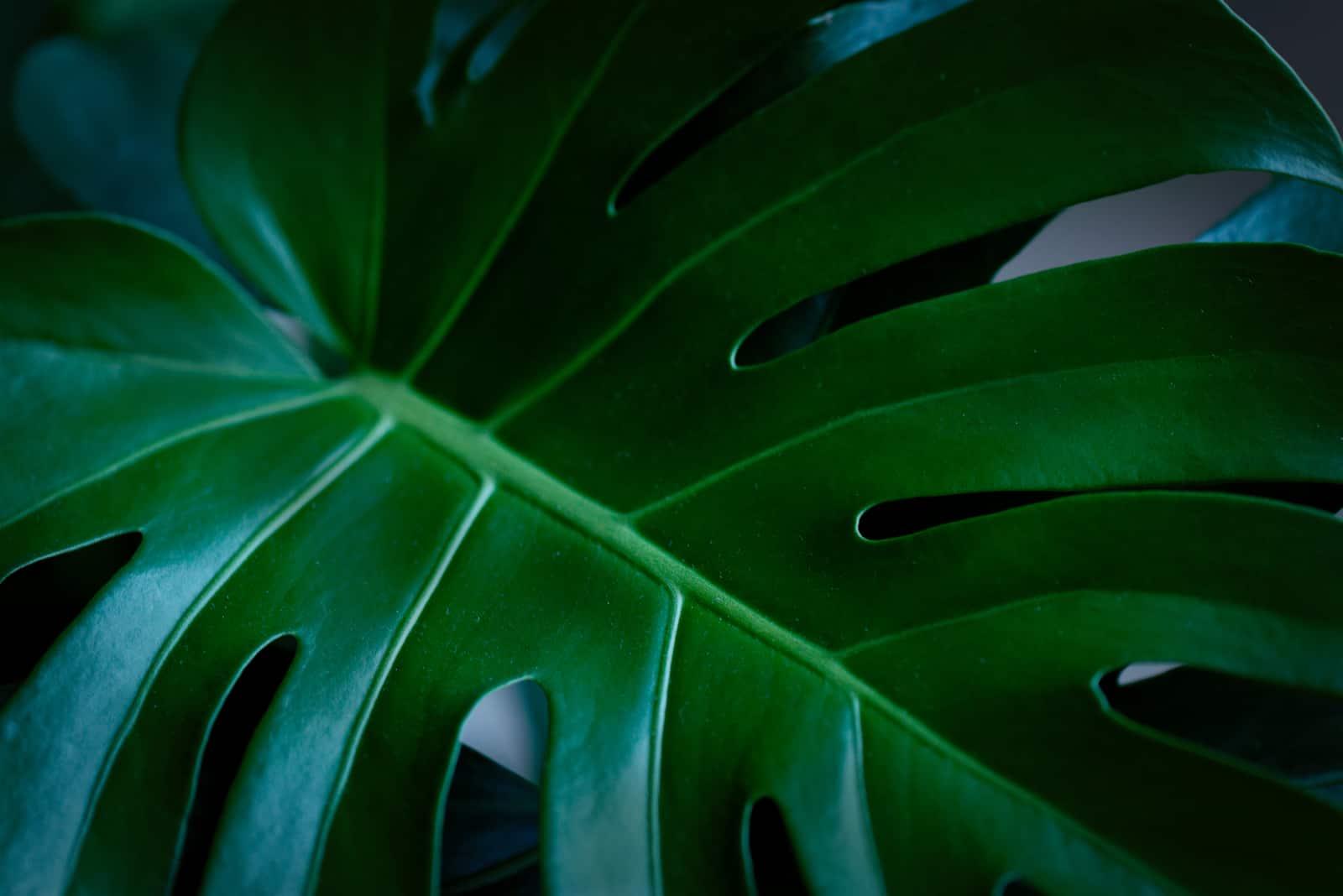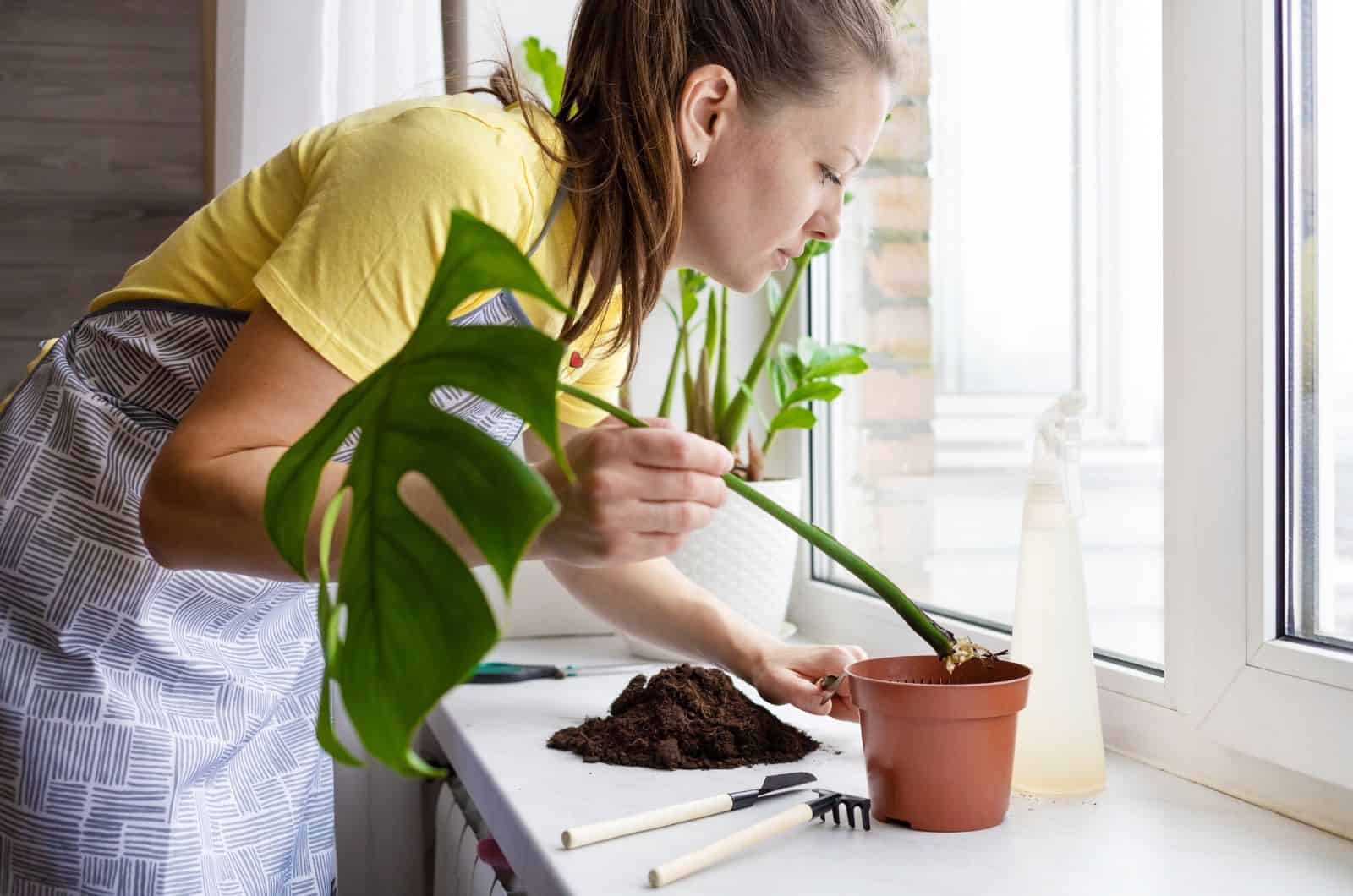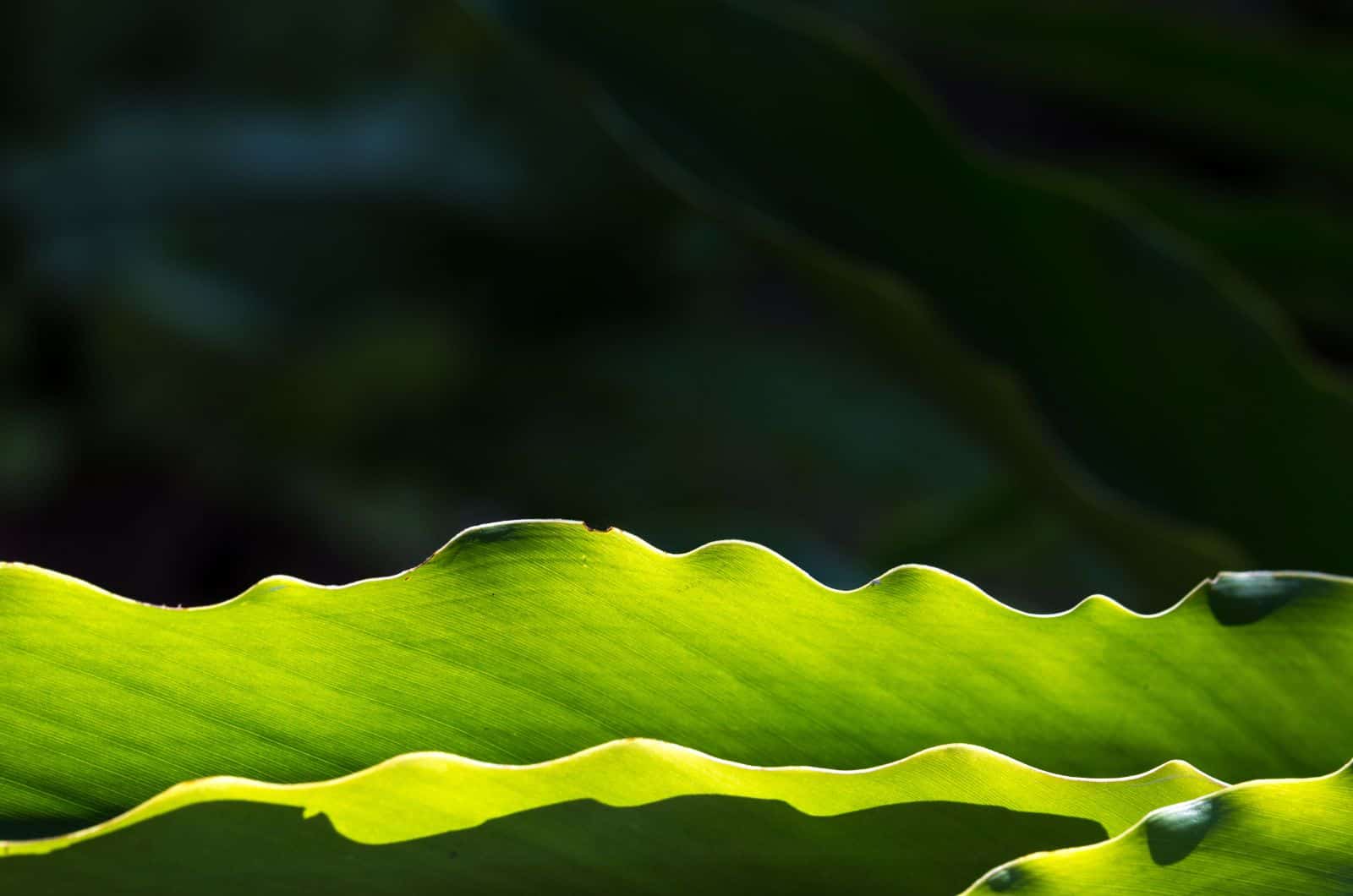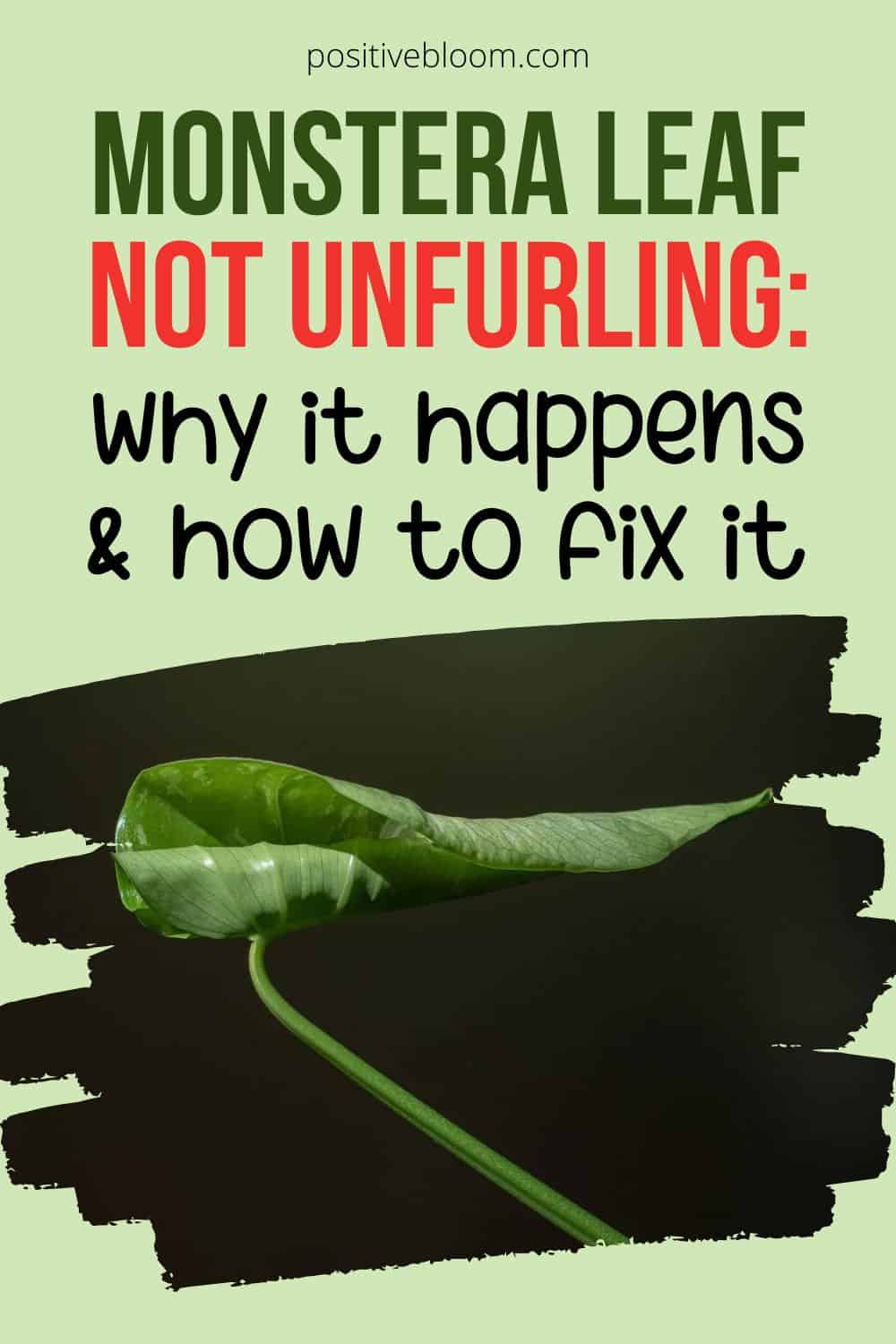The magnificent Monstera is one of the most common houseplants.
It’s pretty hard to decide which Monstera variety looks best, which is why I grow a lot of them! The most popular varieties are Monstera deliciosa and Monstera adansonii.
Monsteras are known for their fascinating leaves that develop holes. However, the leaves may face some issues during their various growth stages.
Have you noticed your Monstera leaf not unfurling? There’s no need to panic if you do! If you have a young Monstera, give it some time and check if its requirements are being met.
I have covered all the reasons why this issue might occur, as well as how to solve them.
Let’s get started!
Monstera Leaf Not Unfurling: Common Causes
If the leaves of your Monstera won’t unfurl and it has been a long time since you got it, you should check the growing conditions.
The most common reasons Monstera leaves don’t unfold are low humidity, lack of soil moisture content, low light, and pest infestations.
Let’s go into more detail!
Low Humidity
Monsteras grow in warm and humid tropical regions of Central America in their natural environment. The essential thing to understand about this plant is that they enjoy high humidity levels.
You’ll need humidity levels over 65% if you want your Monstera to grow healthy!
The problem arises because the average household typically has only 30-50% humidity, and tropical plants won’t grow well at these levels.
With plants like the Monstera, their breathtaking leaves need high humidity for development and a glossy appearance.
Plants from the Monstera genus are known for their ability to develop secretions and waxes on their leaves that serve as protection from pests and diseases.
The wax will harden if your Monstera is dealing with a lack of humidity. In this case, dry and drafty air will cause this deformation. The good thing is that this is a method of protection for Monsteras, but the bad thing is that it affects the overall health and appearance of the plant.
This condition mainly affects Monstera leaves in colder months when people use heating sources to warm their houses. The humidity decreases, and even though your Monstera deliciosa has enough food, its leaves can’t open.
In this case, you’ll notice browning of the leaves, especially the edges, which will also be crispy and dry. The entire surface will be deformed in this case.
Your Monstera will undoubtedly appear weak and wilted, and a lack of water and too much light will make the issue even worse.
Not Enough Soil Moisture
There is a scientific explanation for the connection between unfurling and watering.
These vital processes in the plant’s development are related to turgor pressure. This feature promotes the plant’s growth, and as a result the leaves unfurl and grow larger.
For the development of turgor, the leaves need to have enough moisture. There must be enough leaf moisture in order for the cell walls to work.
The fact is that Monstera leaves receive the water necessary for their growth from the soil, and if the soil lacks moisture, the leaves will also lack it.
If your Monstera is underwatered, unfurling won’t happen, and the problems don’t stop there!
Underwatering creates additional problems as a plant that lacks water will also have light, humidity, and temperature issues.
Underwatering often occurs as a result of fear because the biggest fear of plant growers is overwatering! If you skip watering entirely in order to avoid overwatering, another problem arises.
If the leaves of your Monstera don’t unfurl, you’ll need to check if the soil has enough water.
How To Check Soil Moisture
There are several ways to check the soil moisture content.
The first thing you can use is your finger. Just insert it 2-3 inches in the soil and feel if it’s wet or dry. This may be a tricky method for beginner gardeners, but as time passes it will become an easy and pretty reliable method.
There is another method that can be helpful if you don’t want to get your fingers dirty; the weight of the Monstera’s pot. It can also tell you if the plant is lacking moisture.
Of course, you won’t be able to lift mature Monstera deliciosas unless you are a pro weightlifter! This method only works with young Monsteras. If the pot is light, your Monstera plant needs water.
You can also observe the color of the topsoil to see if it needs water.
Wet things look darker, and the same goes for soil; if it’s light brown you have likely skipped one or two waterings!
Though these three methods are quite unreliable for inexperienced gardeners, technology has taken care of the rest. You can purchase a moisture meter to accurately measure the moisture content whenever you suspect it’s the right time for watering.
Low Light
Another essential part of plant care is ensuring enough light. Although these plants can tolerate low light levels, that doesn’t mean they’ll grow well in a dark corner of the room! It may look perfect there, but your Monstera won’t agree.
New leaves and new growth occur due to successful photosynthesis, and plants need enough energy in order to photosynthesize. They also use this energy to prevent tissue damage and promote leaf unfurling.
The right amount of light is required to ensure there’s enough energy for this process, so if your Monstera lacks light its new leaves will need a lot of time to open or, more often than not, won’t unfold at all.
Again, the problems don’t stop there. Unfolding issues will be the least of your worries if your plant doesn’t receive enough light.
Your Monstera will display legginess, the leaves will turn yellow, and the soil will take too much time to dry. Then you’ll think your Monstera lacks water, and you’ll water it thoroughly.
You can guess what happens next; yes, your Monstera will face overwatering! The wet soil will attract fungi, the roots will rot, and the plant will die!
Pest Infestation
It seems to me that every time I discuss plants with my fellow gardeners, we always end up on the topic of pests. It’s interesting how such tiny creatures cause such massive problems!
The most common soft-bodied insects that infest Monstera leaves are spider mites, mealybugs, thrips, scales, and aphids.
Although houseplants aren’t prone to pests like outdoor plants, that doesn’t mean they can’t be affected by them.
If the Monstera leaves don’t fold in time, check the humidity, soil, and light. If all the conditions are right, it’s time to check the leaves – both the surface and undersides.
It’s especially hard to detect if your Monstera has pests because the new leaves haven’t opened yet, and the insects are tiny and barely visible to the naked eye. I recommend using a magnifying glass for this purpose.
Check the undersides first. If you notice any sticky substances, webbing, or little brown spots, your Monstera likely has pests. If the tips of the leaves have also turned yellow, you might be dealing with a serious pest infestation.
New Leaves Not Unfolding
Don’t panic if the new leaves don’t open right away. Maybe your Monstera still hasn’t woken up from dormancy.
If you notice fenestrations on the leaves, wait a little bit longer for the leaves to unfold.
New Monstera leaves might also be damaged; in other words, they are lacking nutrients and the plant needs more care.
Nutrient deficiency is often the cause of leaf deformation. Therefore, you’ll need to check the soil quality and drainage system.
Ensuring all the necessary conditions will encourage new growth and the leaves will unfold.
Here’s exactly what to do!
Solution To A Monstera Leaf Not Unfurling
Although unfurling may seem like a serious problem, that isn’t always the case.
Monsteras such as the Monstera Adansonii (friedrichsthalii) and Monstera deliciosa aka Philodendron Monstera are common indoor plants that are easy to maintain. However, some issues may occur, such as the fenestrated leaves losing their dark green color and looking pale. You may also notice brown and yellow leaves or a decreased growth rate.
Each of these issues is caused by inadequate conditions related to light, humidity, temperature, soil, watering, and fertilizing.
So, what should you do if your Monstera leaves don’t unfold?
Find out the answer and some care tips for Monstera plants right here!
Increase Humidity
The first thing to do is ensure an adequate humidity level. There are many ways to go about this.
I’ve been growing plants for a long time, and I have tried every possible method of increasing humidity!
I will now share some methods with you that will definitely work.
Misting
If you spend a lot of time caring for your plants and you don’t mind doing something on a regular basis, misting is the perfect method for you.
This method won’t work for forgetful plant growers because the water left on the leaves after misting will evaporate in a matter of hours.
For this method, you’ll simply need to prepare a spray bottle and some water.
This method has one drawback – if water from the leaves doesn’t evaporate and sits on the leaves for too long, the leaves will become susceptible to fungi that will cause them to rot.
The best way to deal with this issue is to mist your Monstera in the morning so the water evaporates throughout the day.
Grouping The Plants
This method works perfectly for growers that have many plants. For example, if you grow Philodendrons or Snake plants, place them next to your Monstera to increase humidity for all of them!
How does this method work? Well, water from all the plants will transpire, which increases the humidity and spreads it evenly to make a microclimate.
The problem with this method is that you need to have a lot of plants, and grouping them takes up a lot of space.
If you have enough space and plants, creating a microclimate is a great idea.
Moving The Plant To A Kitchen Or Bathroom
All water sources, including sinks and bathtubs, can help you increase humidity. Even wet towels may come in handy!
Your Monstera adansonii will thrive in a kitchen or bathroom. Any plants that require high humidity should be placed in these rooms.
Be careful about the light when placing plants in bathrooms. If you don’t have windows – or the windows don’t get enough light – consider purchasing grow lights.
The Pebble Tray Method
You may have already wondered if a pebble tray really increases humidity, and it does to a degree. This is probably the simplest of all the methods, and you don’t have to invest a lot of money or time into it. It also has a pretty high success rate!
You’ll need three things, a tray, some pebbles, and water.
Put the pebbles in a tray (at least an inch deep) and pour water over them. The next step is putting your Monstera on the tray. That’s it! As the water from the tray evaporates, the humidity increases.
Just like with every other method, a pebble tray has a drawback. Water will be standing around the original pot all the time, increasing susceptibility to the fungi that causes root rot.
The best way to avoid this is by checking on the plant regularly. If you notice deformations such as soft, yellow, or brown leaves, check if the roots are touching the water from the tray.
Two Pots Method
The two pots method is great for plants. How does it work? First, get a new pot about 1-2 inches larger than the original and make sure it has drainage holes.
Then place some sphagnum moss in the bottom of the second pot. Wet the sphagnum moss and put the original pot into the bigger one.
The water will slowly evaporate from the sphagnum moss, increasing the humidity.
To avoid water pooling in the second pot, make sure it has drainage holes!
Humidifier
The method with the highest success rate is using a humidifier. It’s a pretty expensive method, but it guarantees the correct humidity for your plants.
Some of these devices can also monitor humidity levels, and you can set them to work only at certain times.
There are many different types of humidifier to choose from!
Adjust Watering
Now you know how to deal with humidity, so it’s time to find out about the ideal watering schedule for Monsteras.
The first thing to learn is the best type of water to use. The best would be filtered water or letting tap water sit overnight. This removes the harmful chlorine and fluoride that would otherwise damage your Monstera.
The temperature of the water also plays a great role in watering; room temperature would be ideal.
The last thing to discuss is the watering technique. Although top watering isn’t forbidden and can yield good results, I recommend using the bottom watering technique for your Monstera adansonii.
Place it in a sink and pour water. Then wait for about 10-15 minutes until the soil absorbs the amount of water it needs.
If watering from the top, make sure you don’t get water on the Monstera plant leaves or they may rot.
Adjust Light
Another major factor for a Monstera’s healthy growth is the right amount of light.
When we get new plants, we often want to place them where they go best in terms of decoration. But bear in mind that a dark spot in the corner isn’t a good place for plants such as Monsteras.
What about windows? It sounds completely logical to place plants on windows so they receive enough light, but this won’t work either. Low light isn’t the only thing to avoid.
Direct sunlight may damage your Monstera even more than low light. First, it will increase the evaporation rate so the soil loses water faster.
Second, the leaves will be highly affected. If your plant receives direct instead of indirect light, you’ll notice curling, yellowing, and burns on the leaves.
Third, direct sun will affect the overall appearance of your Monstera, so if you notice it wilting and drooping you’ll need to check the light levels.
So, where is the best place for Monsteras? You’ll need to find a spot that receives indirect sunlight; I recommend a south or east-facing window as your Monstera will receive enough light without being damaged by direct sun or low light.
If your plant still lacks light, you can buy grow lights from Amazon, and if it receives too much light you can buy sheer curtains instead. Remember that the beautiful leaves of Monstera plants are protected in the wild by the rainforest canopy.
Remove And Prevent Pests
Luckily, pest infestations are curable in most cases. Before you use any pesticides, I suggest going with natural remedies first.
The first option is dishwashing liquid mixed with water. Mix them together, pour it into a spray bottle, and spray off the pests.
You can also use rubbing alcohol. The foliage of Monsteras is very delicate, so you’ll need to be gentle so as not to damage them. Always use soft materials for rubbing – I use soft sponges.
My favorite solution to pests is neem oil. It’s suitable for all houseplants and has a high success rate. Pay attention to the dosage as neem oil may burn the leaves.
If some leaves look deformed due to pests, prune them off as the roots still provide them with energy, but they won’t be likely to recover.
If all these methods fail, you can use pesticides. Remember that pests can damage plants seriously and even kill them in severe cases. Under such circumstances, you should isolate the plant to avoid spreading the pests to your others, and if it can’t be cured I recommend discarding it altogether.
Never put infected plants on the compost pile!
Repot Your Monstera
When my Monsteras face serious issues, I always repot them. For example, if the leaves don’t unfold due to low humidity, increasing humidity will solve the problem.
But if the plant lacks nutrients and its overall appearance is affected (including unfolding), you should give your Monstera a fresh start.
Repotting is beneficial for many reasons. First, you can check the root system, and if the plant is root-bound you can take care of it.
Another benefit of repotting is removing any diseased roots.
You can also use the divided sections for propagation.
Lastly, always use a new potting mix when repotting to provide your Monstera with new nutrients. Use a well-draining potting mix and add some perlite to promote drainage just in case.
Choose an adequate pot for your Monstera to further aid drainage.
Remove your Monstera from its original pot and loosen the soil. The roots will be visible so you can inspect them, and if everything is fine with the root system, fill the new pot with potting mix and put your Monstera in the center.
Water your plant, and you’re done with repotting!
How Long Does It Take For A Monstera Leaf To Unfurl?
You can expect Monstera leaves to unfurl in a matter of weeks. Some Monsteras need only a week for the leaves to unfold, while other varieties can take two months.
Be patient; nothing comes overnight, and this applies to monstera leaves unfolding.
If you suspect the leaves are taking too long to unfold, you can inspect your Monstera further.
A healthy Monstera has amazing dark green leaves with fenestrations and develops aerial roots. To encourage growth, you can stake your Monstera using a moss pole.
Remember that with proper care the leaves have no reason not to unfold!
Wrapping Up
Was your Monstera leaf not unfurling? That’s not an issue anymore!
First, detect the cause of the issue and then help the leaves unfold using our helpful tips.
I know you want only the best for your Monsteras, so don’t be discouraged if these things happen.
Check for your plants regularly and be patient – plants can be drama queens sometimes!
Until next time!
Like this post? Share or pin it for later!

